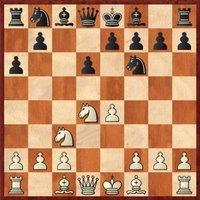
Learning the Najdorf - a new trip in the world of chess (ep. 1)
Hello,
I've decided to include the Najdorf in my repertoire as Black, and to travel along this path with the chess.com community, hoping to get valuable insights from other members and at the same time improve my learning process by sharing my thoughts and discoveries.
The first question is : why the Najdorf ? Well, I find it very interesting as it brings rich strategical and tactical play; I also believe it's inherently sound. But I must confess there is also some ego thing involved here : I find the Najdorf to be a very 'classy' opening, kind of like a nice sports car  - so I'd rather take the opportunity to be in the driver's seat than simply watch it on the road
- so I'd rather take the opportunity to be in the driver's seat than simply watch it on the road 
When it comes to new openings, my learning process has always been very inconsistent. It usually starts with a spark (a nice game, a nice manaouvre, somebody talking with emphase about the opening, an impression I understand some typical position from the opening 'naturally', etc.), but then it can go anywhere from here.
Although I'll try order my thoughts a bit to make this blog more reader-friendly, I won't try to follow a very strict structure, as I know it just doesn't work for me. I've always learnt chess through 'free associations', and I'm too old to change this 
So, we'll go and visit various places together, such as : inspiring games, thematic moves/manoeuvres, analyzing of my own training games, heartbreakers (what to avoid), etc. - in no particular order.
For this first entry, I present the layout of variations I'm going to use as black, and the reasons for my choice. I intend to use the defence as a 2nd opening in my OTB games, against players rated in the 1600-1900 elo range (that's important to explain some choices) :
1) 6.Be2 is the first variation to explore for two reasons : I think it might be the most popular open variation in the target rating range, and that's where fundamental Najdorf ideas appear in their purest form. I'll go for 6...e5, and positional play, as I think I understand correctly these positions and hope to get winning chances in various endings.
2) Second comes 6.Bg5, still very popular at club level, and fairly dangerous for the unprepared. I have some experience on the white side of the variation, and I will go for some secondary old and tricky surprise line, so that my opponents will be denied easy attacking play and that will give me fair counterattacking chances. I keep the variation a secret at the moment - stay tuned ! 
3) Third is 6.Bc4 ; I don't think it's currently very popular, but it's quite dangerous and requires some knowledge, especially in the vintage Fisher's lines. I wasn't sure which line to pick, so I asked a fellow club member who recommended to go for the main lines with 6...b5, especially as he considered 6...Nbd7 difficult to handle in the light of the problems Kasparov himself experienced against Short during their PCA match.
4) 6.Be3 is fairly popular at all levels, and gives white a clear attacking plan. I've selected the devious and relatively unknown 6...g6!?, transposing to the Dragadorf. It has the advantage to channel the games to quieter positional waters, and I have the feeling that if white blindly follows the usual 6.Be3 plans, he will get nowhere.
5) 2...d6 3.Bb5+ Nd7 and 2...d6 3.Bc4 - yeah we're not strictly in Najdorf territory here, and I don't intend to cover other Anti-Sicilian stuff, but these two needs to be adressed, as I will probably meet them fairly often, and a little knowledge can save me some problems. 3...Nd7 is ambitious (I want to avoid the rather drawish 3...Bd7), and 3.Bc4 combined with an early c3-d4 pawn push may be dangerous.
6) 6.f4 - very rare these days, as people tend to prefer the trendy 6.Be3 - My first idea is to go for 6...Qc7 followed by g6 - I think it has been played by Gelfand
7) Others (6.h3, 6.a4, 6.g3, 6.Rg1, 6.f3) - no clear idea yet about these options : I may have to learn the rough way (ie. lose some training games and then check the theory). I only have a pointer about 6.f3 that I intend to meet with the independant 6...Qb6, as I don't want to play regular English attack positions, nor Scheveninguen set-ups.
Ok, that's all for now, see you soon ! 
